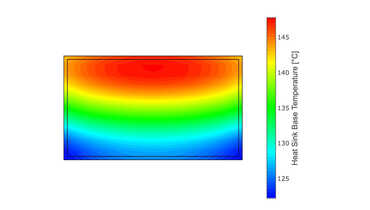Navigating the complexities of hazardous environments is no small feat, especially when the safety of your team and equipment is on the line. You understand the challenges of complying with stringent regulations while striving to maintain operational efficiency. At Interelectronix, we've walked alongside countless professionals facing these exact hurdles when designing ATEX Touch Screen Solutions, and we know the stakes are high. The 60079 series of standards is more than just guidelines; it's a critical component of ensuring safety in explosive atmospheres. Let us guide you through what this means for your operations, drawing from our extensive experience in the field.
Understanding the 60079 Series
The IEC 60079 series of standards represents a cornerstone in the realm of explosion protection, providing a unified framework for the safe use of electrical equipment in hazardous areas. These areas are classified based on the likelihood and persistence of explosive atmospheres, which can be caused by flammable gases, vapors, or combustible dusts. The standards aim to mitigate the risks associated with operating electrical apparatus in such conditions, ensuring that potential ignition sources are effectively managed.
The series encompasses numerous parts, each addressing specific aspects of explosion protection. From general requirements to detailed specifications for different protection methods, the 60079 series serves as a comprehensive guide for manufacturers, engineers, and safety professionals. By adhering to these standards, organizations can reduce the risk of explosions, protect personnel, and prevent damage to equipment and facilities.
The Importance of Compliance
Compliance with the 60079 series is not merely a regulatory formality; it is a fundamental component of responsible operation in hazardous environments. Explosions in industrial settings can have devastating consequences, including loss of life, severe injuries, environmental harm, and significant financial repercussions. Beyond the immediate impacts, such incidents can lead to legal liabilities, reputational damage, and long-term operational disruptions.
By diligently following the standards, companies demonstrate a proactive commitment to safety. This commitment extends to employees, who can work with confidence knowing that appropriate measures are in place to protect them. It also resonates with clients, partners, and regulatory authorities, enhancing trust and credibility in the marketplace. Moreover, compliance can lead to operational efficiencies, as well-designed safety systems often contribute to smoother and more reliable processes.
Key Components of the Standards
The 60079 series is structured to address a wide array of factors related to explosion protection. Key components include:
Equipment Protection Levels (EPLs): These categorize equipment based on the level of protection they provide, taking into account the likelihood of an explosive atmosphere and the consequences of ignition. EPLs help in selecting appropriate equipment for different zones within hazardous areas.
Types of Protection Techniques: The standards define various methods to prevent ignition, such as intrinsic safety (Ex i), flameproof enclosures (Ex d), increased safety (Ex e), and pressurization (Ex p). Each technique has specific design and application criteria, suited for different scenarios and types of equipment.
Gas and Dust Classification: Understanding the properties of the hazardous substances present is essential. The standards provide guidance on classifying gases and dusts based on their explosive characteristics, which influences the selection of equipment and protection methods.
Temperature Classifications: Equipment must be designed to operate within specific temperature limits to prevent ignition of surrounding atmospheres. The standards outline temperature classes and testing requirements to ensure compliance.
Installation and Wiring Practices: Proper installation is critical for maintaining the integrity of explosion protection measures. The standards include detailed requirements for cabling, sealing, grounding, and other aspects of electrical installations in hazardous areas.
Designing for Hazardous Environments
Designing electrical equipment for use in explosive atmospheres involves a meticulous process that goes beyond standard engineering practices. Manufacturers must consider factors such as material compatibility, mechanical strength, thermal management, and potential failure modes. Components must be selected and configured to eliminate or control ignition sources, which may include electrical sparks, hot surfaces, or static electricity.
The design process often involves iterative testing and validation, utilizing specialized facilities and methodologies to simulate hazardous conditions. Compliance with the 60079 series requires thorough documentation, including design calculations, test reports, and quality control records. Manufacturers must also ensure that their supply chains and production processes align with the stringent requirements of the standards.
Installation and Maintenance Practices
The effectiveness of explosion protection measures hinges not only on the design and manufacture of equipment but also on proper installation and ongoing maintenance. Qualified personnel must carry out installations, adhering strictly to the guidelines outlined in the 60079 series. This includes selecting suitable equipment for each zone, implementing correct wiring methods, and ensuring that protective measures are not compromised during installation.
Maintenance practices are equally critical. Regular inspections, testing, and preventive maintenance help identify potential issues before they lead to failures. The standards provide guidance on inspection intervals, types of inspections (visual, close, detailed), and documentation requirements. Training and competency of maintenance personnel are emphasized, as improper maintenance can inadvertently introduce hazards.
Global Impact and Regional Adaptations
While the IEC 60079 series serves as the international benchmark for explosion protection standards, regional adaptations and additional regulations often complement it. In the European Union, for example, the ATEX directives incorporate the IEC standards but also include specific requirements related to equipment and workplace safety. Similarly, North America uses the NEC (National Electrical Code) and CEC (Canadian Electrical Code), which have harmonized aspects with the IEC standards but retain distinct classification systems and requirements.
Companies operating globally must navigate these variations, ensuring that their equipment and practices comply with both international and local regulations. This often involves obtaining certifications from multiple bodies and understanding the nuances of different standards. Collaboration with experts who have cross-regional knowledge can facilitate this process, reducing the risk of non-compliance and associated penalties.
Challenges in Implementation
Implementing the 60079 series can present several challenges, particularly for organizations new to hazardous area operations. Interpreting the technical language and complex requirements of the standards requires specialized expertise. Companies may face difficulties in classifying hazardous areas, selecting appropriate equipment, and designing systems that meet all relevant criteria.
Cost considerations also play a significant role. Equipment designed for explosive atmospheres is often more expensive due to the rigorous design and testing processes involved. Balancing safety requirements with budget constraints requires careful planning and prioritization.
Technological advancements can introduce additional complexity. As new materials, devices, and systems become available, integrating them into existing frameworks while maintaining compliance can be challenging. Companies must stay abreast of technological trends and understand how they fit within the established standards.
The Role of Certification Bodies
Certification bodies, also known as Notified Bodies or ExCBs (Explosion Protection Certification Bodies), are essential in verifying that equipment and systems comply with the 60079 series. They provide independent assessment services, including design reviews, testing, factory audits, and certification issuance. Working with reputable certification bodies ensures that products meet the highest standards of safety and reliability.
The certification process typically involves several stages, starting with a detailed examination of the design and construction of the equipment. Testing is conducted to validate performance under specified conditions, and quality management systems are assessed to ensure consistent production. Certification bodies also monitor ongoing compliance through periodic audits and surveillance activities.
Selecting the right certification partner involves considering factors such as expertise, accreditation, responsiveness, and geographical coverage. Building a strong relationship with the certification body can facilitate smoother processes and quicker resolution of issues.
Advancements and Updates
The field of explosion protection is dynamic, with continuous advancements driven by technological innovation, industry experience, and changes in regulations. The IEC regularly updates the 60079 series to incorporate new knowledge, address emerging risks, and improve clarity. Recent trends include the integration of digital technologies, such as smart sensors and wireless communications, which offer new capabilities but also introduce additional considerations for explosion protection.
Staying informed about updates to the standards is crucial for maintaining compliance. Companies should establish processes for monitoring changes, assessing their impact on operations, and implementing necessary adjustments. Participation in industry forums, training programs, and collaboration with experts can enhance awareness and preparedness.
Training and Competency Development
Ensuring that personnel are adequately trained and competent is a key aspect of compliance with the 60079 series. The standards emphasize the importance of qualifications and experience for individuals involved in design, installation, inspection, and maintenance activities. Investing in training programs helps build internal expertise, reduces reliance on external consultants, and enhances overall safety culture.
Training can cover topics such as hazardous area classification, equipment selection, installation practices, inspection techniques, and understanding of regulatory requirements. Certification programs for personnel, such as CompEx or IECEx Certification of Personnel Competence, provide recognized credentials that demonstrate competency.
Integration with Other Safety Systems
Explosion protection is often part of a broader safety management system within an organization. Integrating the requirements of the 60079 series with other safety practices, such as process safety management, occupational health and safety, and environmental protection, creates a holistic approach to risk management. This integration can lead to improved efficiency, consistency, and effectiveness in safety initiatives.
Risk Assessment and Management
A fundamental component of applying the 60079 series is conducting thorough risk assessments. Identifying potential hazards, evaluating the likelihood and consequences of ignition sources, and implementing appropriate controls are essential steps. The standards provide guidance on assessing risks related to electrical equipment but should be complemented with broader risk management practices.
Risk assessments should be documented, reviewed regularly, and updated to reflect changes in operations, equipment, or regulatory requirements. Engaging cross-functional teams in the risk assessment process enhances understanding and promotes shared responsibility for safety.



